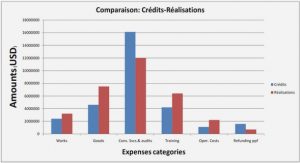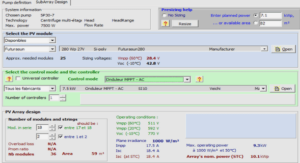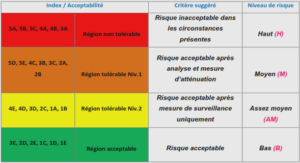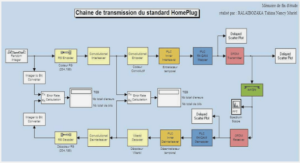DO PROTEIN HYDROL YSATES IMPROVE SURVN AL AND GROWTH OF NEWL
ABSTRACT
Despite larval robustness characterized by the absence of metamorphosis and readiness for exogenous feeding based on commercial feed, the spotted wolffish (Anarhichas minor) displays highly variable survival at first-feeding. In this study, we investigated the use of three dietary concentrations of protein hydrolysates (PH, predigested proteins) (0, 10 and 20%) when newly hatched juvenile wolfish were he Id at three different rearing temperatures namely, 5, 8 and 12°C to determine whether digestion of protein was a limiting factor for fish growth and survival. Final weights for fish at 5, 8,and 12 oC at day 60 were respectively 0.35, 1.19 and 2.02 g. Mean specific growth rates were 1.97,4.01 and 4.88%/day and survival rates were 49.8,53.4 and 33.2%
respectively. No significant effects of PH were observed on growth or survival at any time during the experiment. However, as a general trend, fish survival was always higher when the diet contained 20% PH. We suggest that the degree of hydrolysis of the PH used may have been insufficient to induce specific digestive enzyme stimulation for promoting larval growth. Moreover, precocious ontogeny of the digestive system may have precluded any significant effect of using dietary protein hydrolysates. Our results are discussed in comparison with metamorphic species which characteristically display incomplete development of the digestive system. Keywords Anarhichas minor, spotted wolffish, protein hydrolysates, first feeding, growth, survival.
INTRODUCTION
Spotted woiffish is a marine fish species that is extremely well suited for culture in co Id northem climates (Le François et al.; 2002, Foss et al., 2004). Research efforts can be qualified as recent and have mainly been conducted in northem Norway where one commercial facility is in operation. In the eastem part of Québec province, Canada, research on spotted wolffish culture in collaboration with Norway, Iceland and Newfoundland has been underway since 1999 and a project aimed at creating an experimental farm with a production of 10-20 metric tons) is actually under evaluation.
The advantages of raising this species as part of a mariculture diversification strategy inc1ude 1) their high growth rate at co Id water temperature, 2) the low complexity of the larval-juvenile period and 3) their farming-friendly behaviour, aH ofwhich should facilitate technological transfer to an aquaculture industry that is currently solely based on salmonid culture. However, despite larval robustness that is characterized by large egg and larval size, the absence of metamorphosis and readiness for exogenous feeding, high variability of survival at first-feeding is frequently reported: e.g. 18-32% (Falk- Petersen et al. (1999), 47-64% (Hansen and Falk-Petersen, 2002), 12-30% (Hansen and Falk-Petersen, 200Ia), 88-96% (Hansen and Faik-Petersen, 200Ib). The observed variation in fish survival at first-feeding can be attributed to variable egg quality, development of digestive capacities and/or differences in the efficacies of the feed formulation (Falk-Petersen et al., 1999; Lamarre et al., 2004).
Digestive capacity has been proposed as a factor limiting growth rate and survival in larval fish (Gisbert et al. , 1999; Sharma and Chakrabarti, 1999; Gawlicka et al. , 2000). Many authors hypothesize that growth capacity and survival rate could be limited by digestion and nutrient transport capacities (Houlihan et al., 1988; Blier et al., 1997; Lemieux et al., 1999). Trypsin activity, more specifically, a key-enzyme of protein digestion, has been correlated to growth rate (Cyprinus carpio: Sharma et Chakrabarti, 1999; Gadus morhua: Lemieux et al., 1999) and survival (Anarhichas lupus: Lamarre et al. 2004). If digestive capacity was a limiting factor at first-feeding of spotted wolffish, the provision of a more digestible diet to the newly hatched fish should improve both their growth and survival since amino acids from dietary proteins are absorbed mainly as peptides or amino acids (Silk et al., 1985; Rust, 1995; Roennestad et al., 2001). Prote in hydrolysates (PH), are pre-digested proteins, that could enhance the larval performance of fish species based on the assumption that an « immature » digestive system limits nutrient absorption (Hardy, 2000). In several species, the inclusion of PH has been reported to have a positive effect on larval performance (Szlaminska et al., 1993; Cahu and Zambonino Infante, 1995; Carvalho et al., 1997; Zambonino Infante et al., 1997).
Spotted wolffish, a non-metamorphic species, displays a well-advanced digestive system at hatching i.e. a twisted and differentiated digestive tract (Falk-Petersen and Hansen, 2001). However, due to high variability in their survival and growth at first-feeding, we investigated whether the early-life performance of this species might be limited by protein digestion capacities and whether the dietary inclusion of PH would improve the early-rearing performance ofthis novel aquaculture fish species.
In an attempt to increase the possibility of detecting beneficial effects of dietary PH supplementation, larval wolfish were maintained at each of the three water temperatures: namely, 5, 8 and 12 oC. Based on a literature review, fish reared at 5 oC should display impaired growth whereas those reared at 12 oC should display higher growth compared to fish reared at 8 oC, which is a regarded as near the optimal temperature for growth of newly-hatched spotted wolffish during the first 60 days of culture (Hansen and Falk-Petersen, 2002). The nutritional requirements of wolffish have not been thoroughly investigated (Foss et al., 2004). To our knowledge, the effect of ad ding pre-digested proteins to the feed on growth or survival combined with the effect of varying water temperature have never been tested on any marine fish species. In addition, we selected spotted wolffish as a non-metamorphic aquaculture marine fish species in order to compare the growth and survival responses of this species compared to the more studied metamorphic species. We assumed at the outset of this study that if protein digestion capacities were a limiting factor for the optimal growth and survival of larval wolffish, dietary PH supplementation would have a limited positive effecf on fish performances especially at optimal temperature (8 oC) and to a lesser extent, at 5 and 12 oc. Accordingly, three levels of dietary PH (0, 10 and 20%) were tested in fish held at each of the foregoing experimental temperatures.
MATE RIAL AND METHODS
Experimental animaIs and rearing conditions
The study was carried out at the aquaculture facilities of the Centre Aquacole Marin, Grande-Rivière, Québec, Canada. Fertilized eggs from three different fem ales provided by Troms Steinbit (Tromso, Norway) were sent by air transportation from northem Norway to Québec, Canada. The eggs were at about 380 degree-day upon arrivaI. Periodic disinfections were performed regularly with glutaraldehyde( 150 ppm) according to protocols established by Hansen and Falk-Petersen (2001 b). lndividual egg masses were incubated in upwelling incubators at 5 oC until hatching. The hatching success of the three egg masses was 53, 36, and 23% and hatching was completed in a
week. Newly hatched fish (mean weight 0.10 ±0.010g and mean length 24.5 ±1.41 mm) from aIl families were evenly mixed and 40 fish were randomly placed in each of the 27 low-Ievel rearing units (l.5 L volume) that were provided with running (0.5 Llmin), oxygenated (oxygen saturation was always above 80%, mean 97 ± 5.5%) sea water (salinity: mean 30.4 ± 0.38 %0). Water depth was adjusted to 2 cm in order to facilitate feed ingestion (Strand et al., 1995). Light intensity varied between 800 and 1000 lux and a 121l2-h light/dark cycle was adopted. Fish were reared at each of three different temperatures (5 oC: 5.2 ± 0.75 oC, 8 oC: 8 ± 0.25 oC, and 12 oC: 1l.5 ± 0.82 OC) and each of the diets was assigned to triplicate groups of fish of each temperature (3 diets X 3 temperatures X 3 replicates = 27 units). The fish assigned to 8 oC and 12 oC were gradually acclimated to their respective temperature (1 oC per hour). Daily record of fish mortality was monitored, dead fish were removed and the rearing units were carefully cleaned with minimal fish disturbance. Initially, fish were fed on Artemia in combination with their prescribed experimental diet each hour for the first two weeks post-hatching to promote good feeding behaviour and secure the experiment. After this period, they were fed only on their respective formulated di et. Fish were hand-fed daily to excess (approximately 1 g per day in each tank) every hour from 0800 to 1700 hr and during the interval mentioned above, a concentration of 500 artemia IL was manually distributed eight times per day to each experimental unit. The compositions ofthe three test diets that were designated as Control, PH IO% and PH20%, are provided in Table 1. Each was forrnulated and processed at INRA-IFREMER, Centre de Brest, France. In regards to the latter, the fommlated feeds were processed as follows: ingredients were mechanically mixed with water, pelleted and then the pellets were dried at 50 oC for 20 min (Cahu et al., 1999). Thereafter, the pellets were sieved to obtain different ranges of partic1e sizes namely 200-400, 400-600, 600-800, 800-1000, and 1 000-1200 ~m. The different size ranges were given to the fish depending on their length using the following formulae:
Particule size (~m)= Length of the larvae (mm)·25 . Each new size range was gradually introduced in combination with the previous one over a few days. AlI diets were stored at 4 oC during the study.
The experimental diets contained equivalent protein, lipid and en erg y content.
They differed only in the molecular forrn of a part of the protein fraction with the control diet containing only native (non-hydrolysed) protein, diets PHIO% and PH20″10 containing 10 and 20% hydrolysed protein respectively in combination with native proteins (Table 1 ).
The PH used, Asta-PepMe, was made by enzymatic hydrolysis of shrimp (Pandalus boreahs) waste, and was provided by ABK-Gaspésie Inc. (Matane, QC, Canada). The amino acid profile was deterrnined using the Waters AccQ Tag method (liquid chromatography (HPLC) with fluorescence detector).
RESULTS
The amino acid profile of the test protein hydrolysate showed that the essential amino acids equalled about 50% of the total. The sulphur amino acids methionine and cystine comprised 7 and 1.3% of total amino acids (Table 2). The Table 2 also shows that the composition in essential amino acids do not differ to a great extent between the LT fish meal and the protein hydrolysates. The molecular weight distribution showed that PH was composed of 25% peptides that had less than 50 amino acids, 65% peptides that had between 50 and 500 amino acids, and 10% peptides with more than 500 amino acids (Table 3).
Dietary PH concentration did not have any significant effect on survival or values for SGR and CF (p>0.05) (Table 4) regardless of rearing temperature. Temperature had a highly significant (p<O.OOOl) effect on SGR. In general, for a given temperature and diet, fish performance was highly variable both between and within replicates.
Growth trials that were conducted at different temperatures (pooJed results) indicate that percent survival from hatching to day 60, was significantly \ower for groups at 12 oC (p<O.OOI) relative to these at 8 and 5 oC (34 versus 52 and 54% respectively; Figure 1). Visual observations of the fish during the feeding trials showed that food ingestion behaviour was fully established by day 12. The observed mortalities always corresponded to non-feeding individuals and were apparent after day 13. Peak mortalities due to starvation occurred at day 16, 23 and 30 and stabilized at day 28, 42 and 53 for groups at 12, 8 and 5 oC respectively (Figure 1).
Values for SGR were directly related to rearing temperature (Figure 2). Overall values for SGR between day 0 and day 60 were 1.97,4.01 and 4.88%·dai’ at 5, 8 and 12 oC respectively. Growth rates at different stages of the study were also calculated and the data have been presented in figure 2.
|
Table des matières
REMERCIEMENTS
RÉSUMÉ
TABLE DES MATIÈRES
LISTE DES TABLEAUX
LISTE DES FIGURES
INTRODUCTION
CHAPITRE PREMIER:DO PROTEIN HYDROL YSATES IMPROVE SURVN AL AND GROWTH OF NEWL YHATCHED SPOTTED WOLFISH (ANARHICHAS MINOR) , A NON-MET AMORPHIC
AQUACULTURE FISH SPECIES?
1.1 RÉSUMÉ
1.2 ABSTRACT
1.3 INTRODUCTION
1.4 MATERIAL AND METHODS
1.5 RESULTS
1.6 DISCUSSION
1.7 ACKNOWLEDGEMENTS
CHAPITRE 2:THE METABOLIC AND DIGESTNE RESPONSE OF SPOTTED WOLFFISH ANARHICHAS MINOR) TO V ARIOUS GROWTH RATES INDUCED BY TEMPERATURE
2.1 RÉSUMÉ
2.2 ABSTRACT
2.3 WTRODUCTION
2.4 MA TERIAL AND METHODS
2.5 RESULTS
2.6 DISCUSSION
2.7 ACKNOWLEDGEMENTS
3. CONCLUSION GÉNÉRALE
4. BIBLIOGRAPHIE
![]() Télécharger le rapport complet
Télécharger le rapport complet






